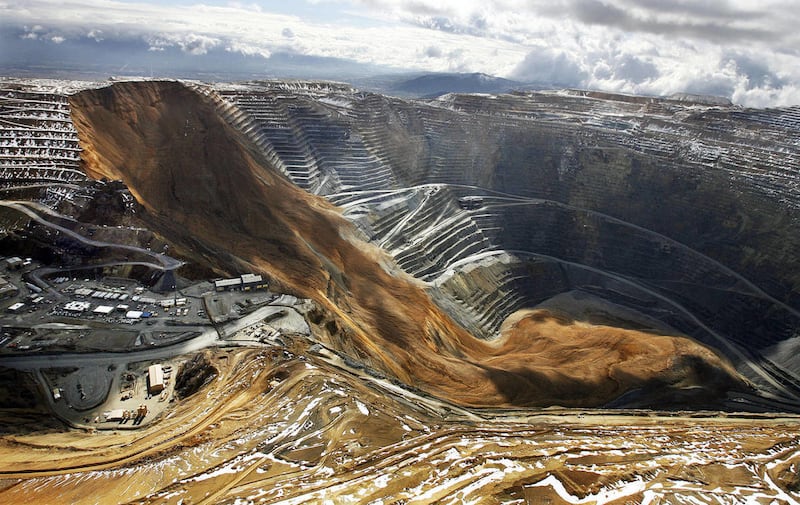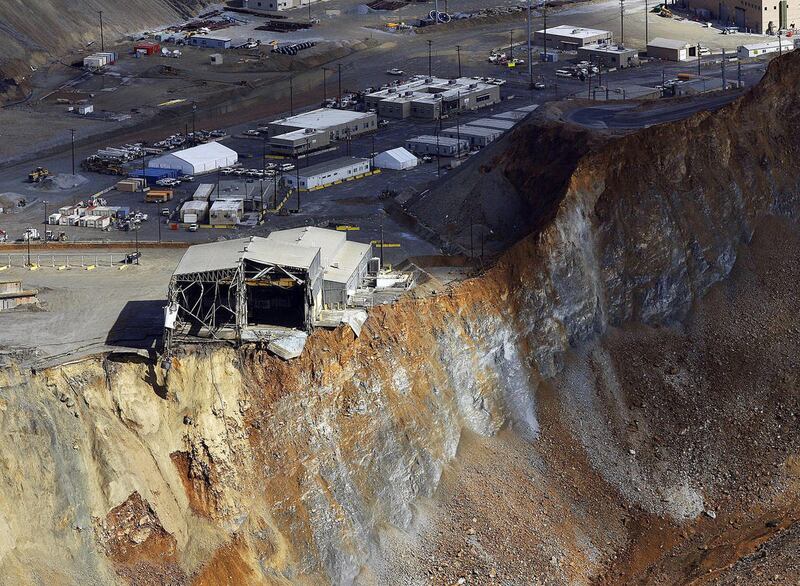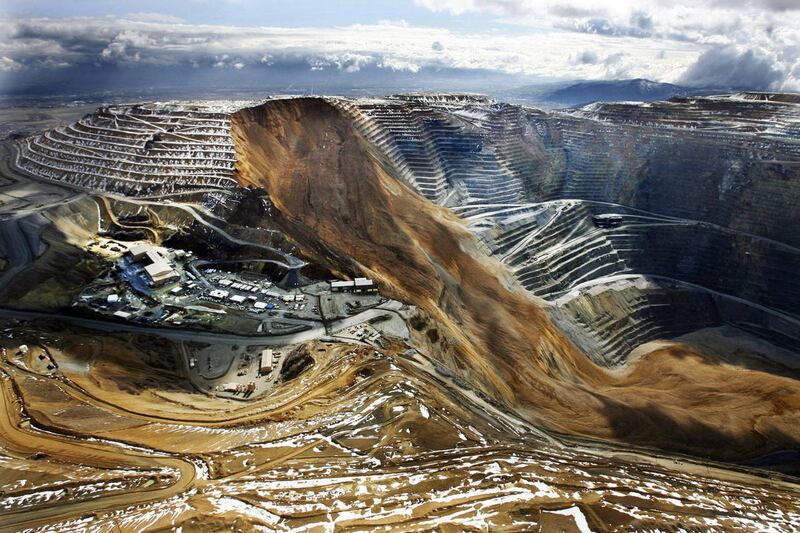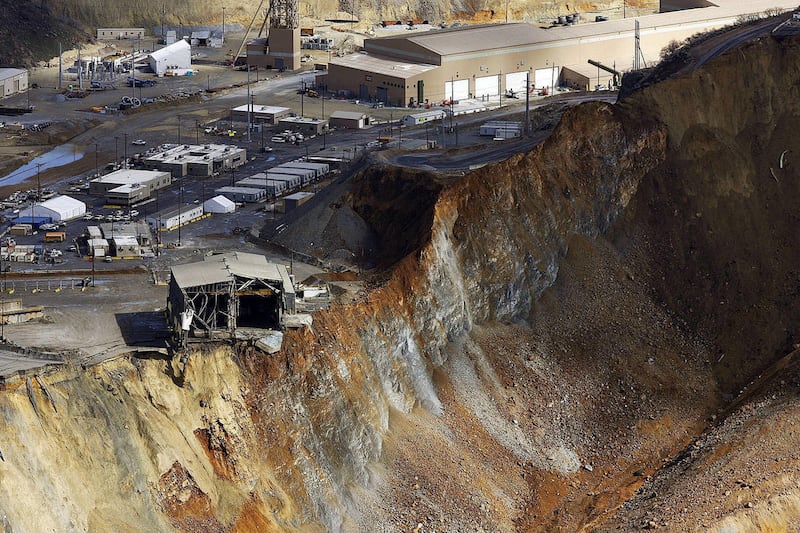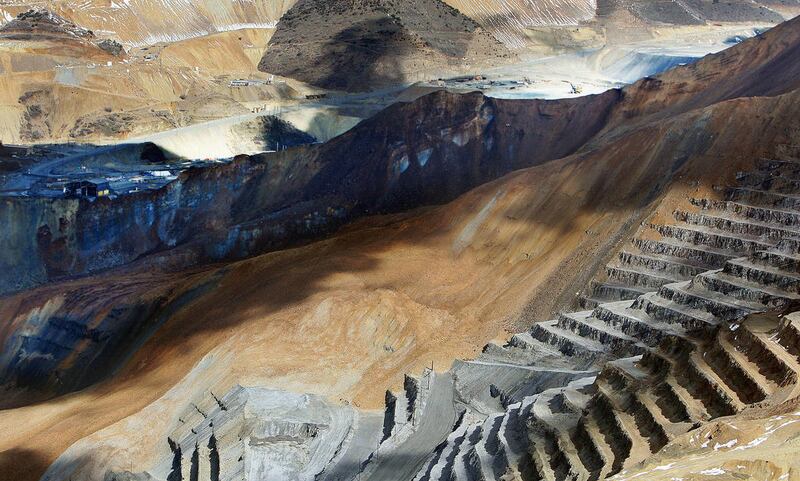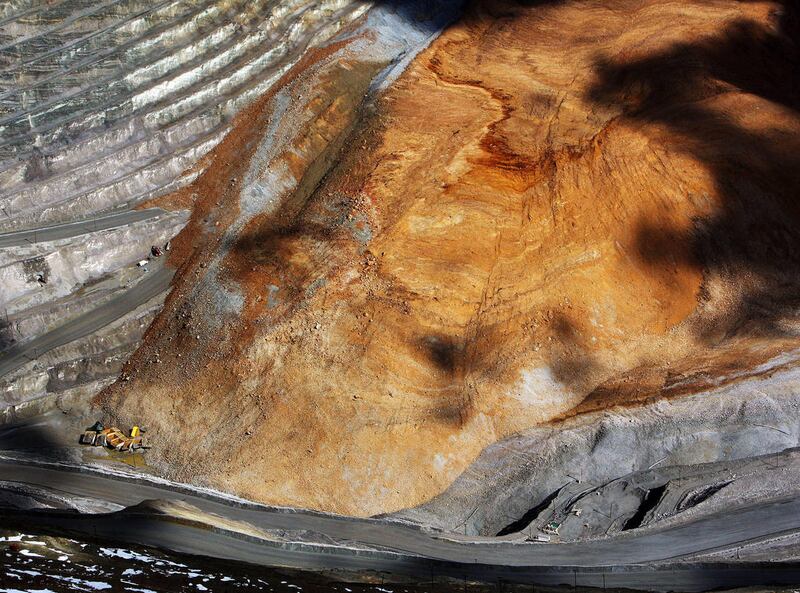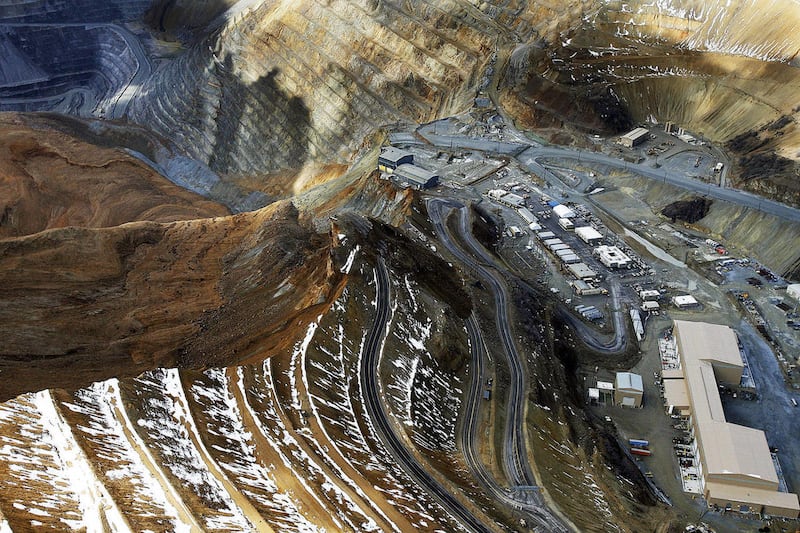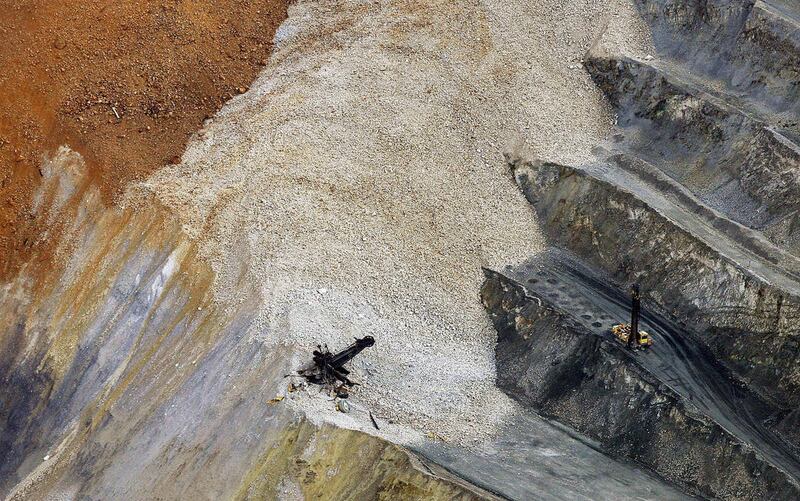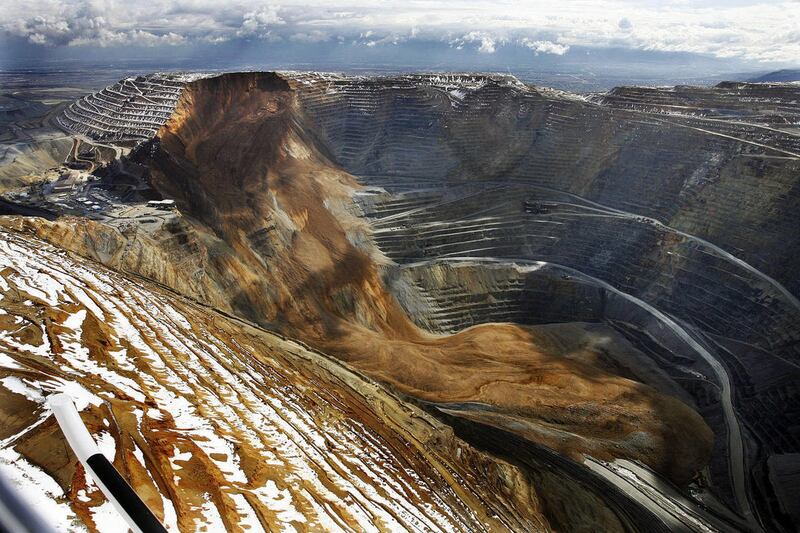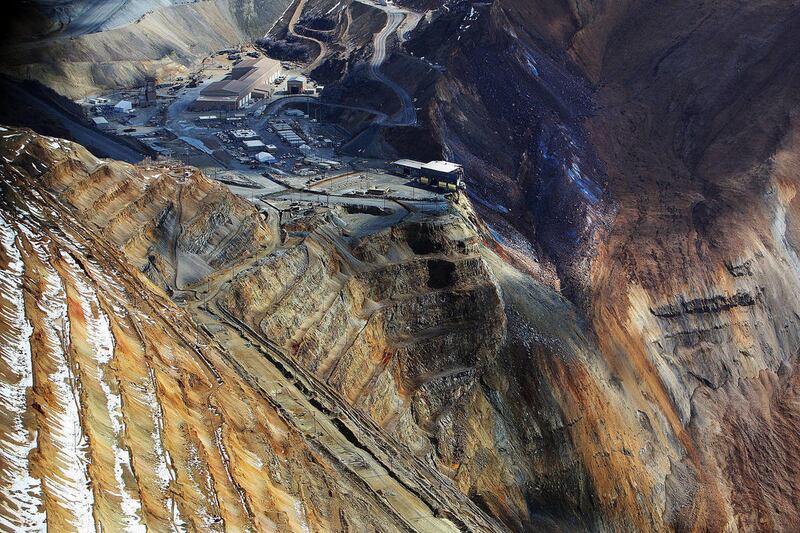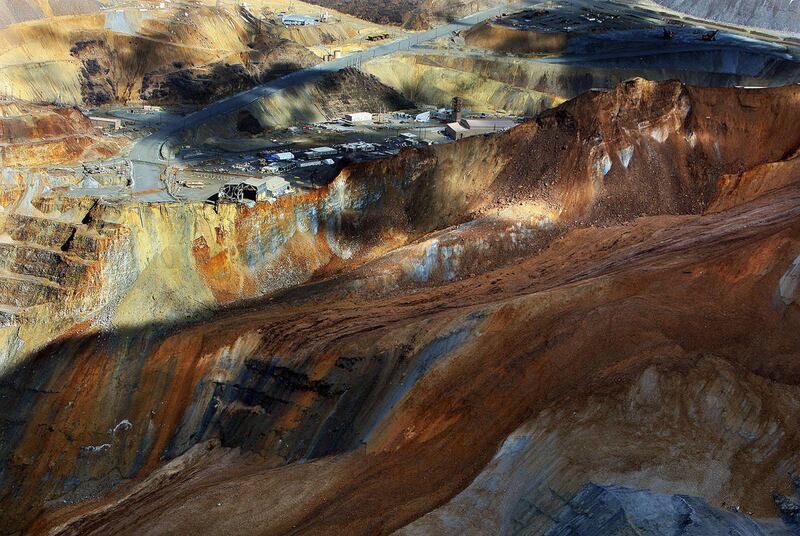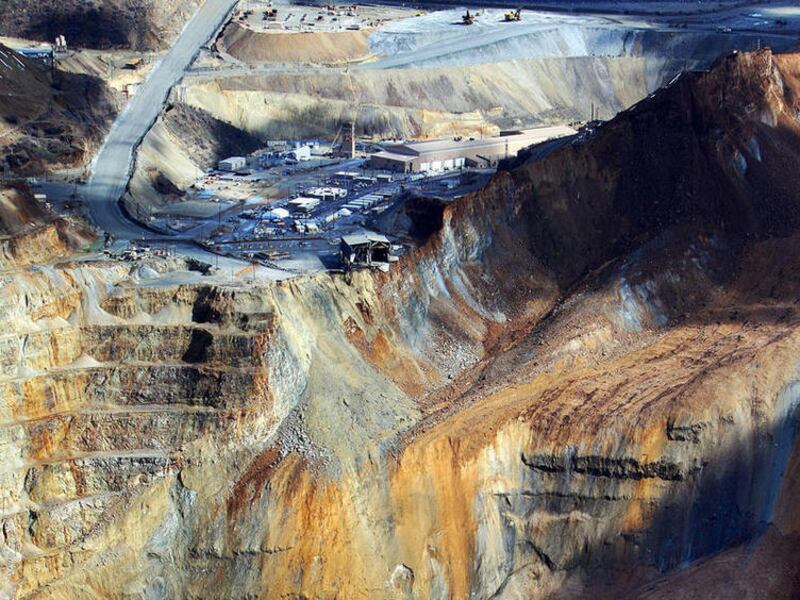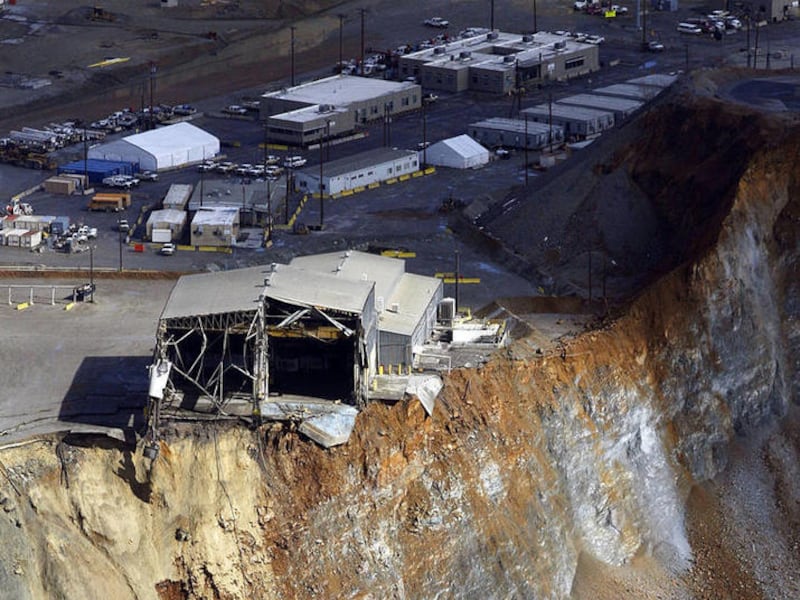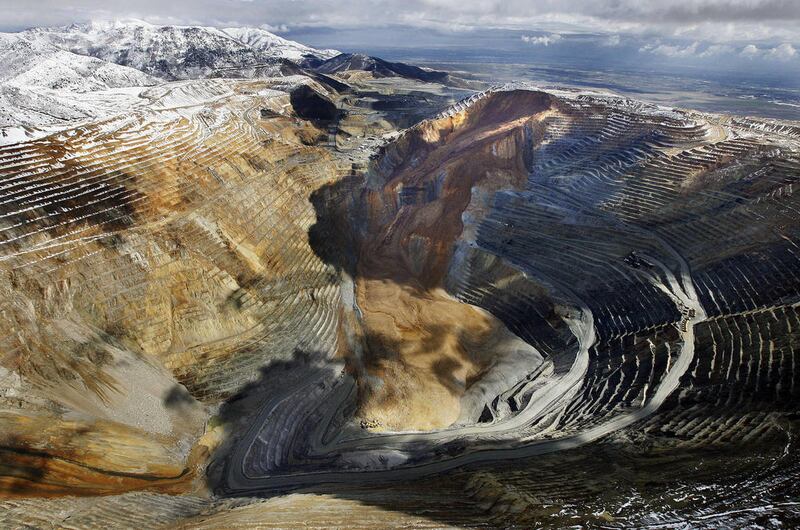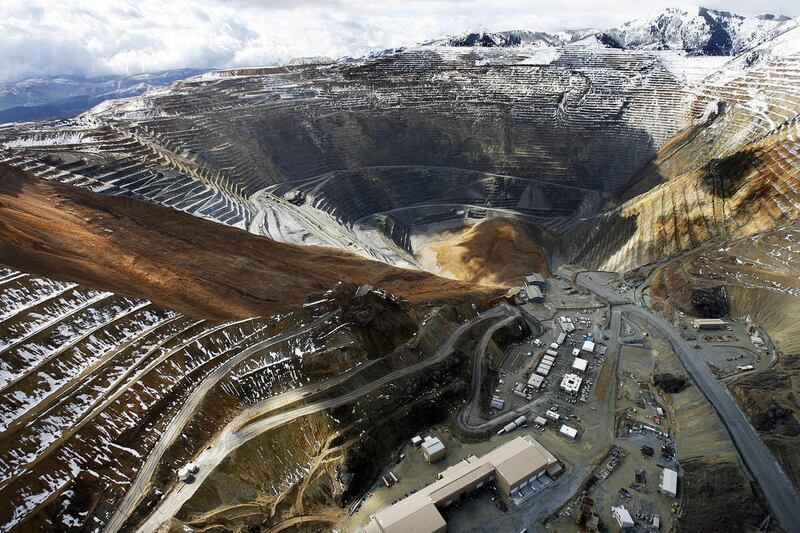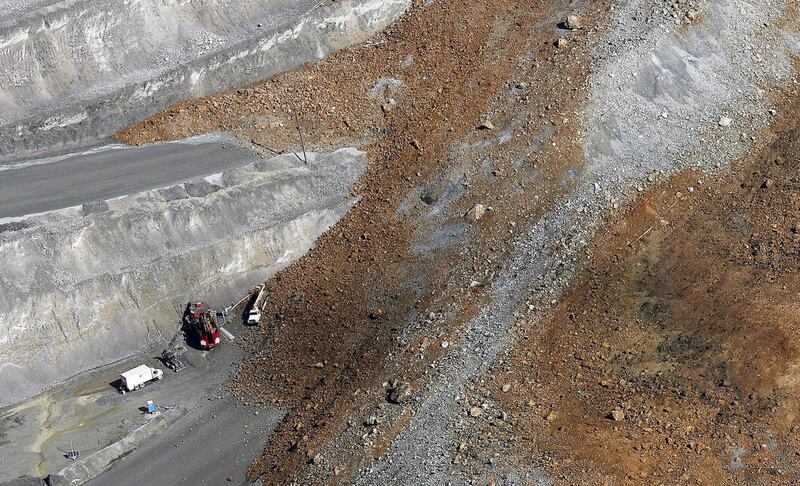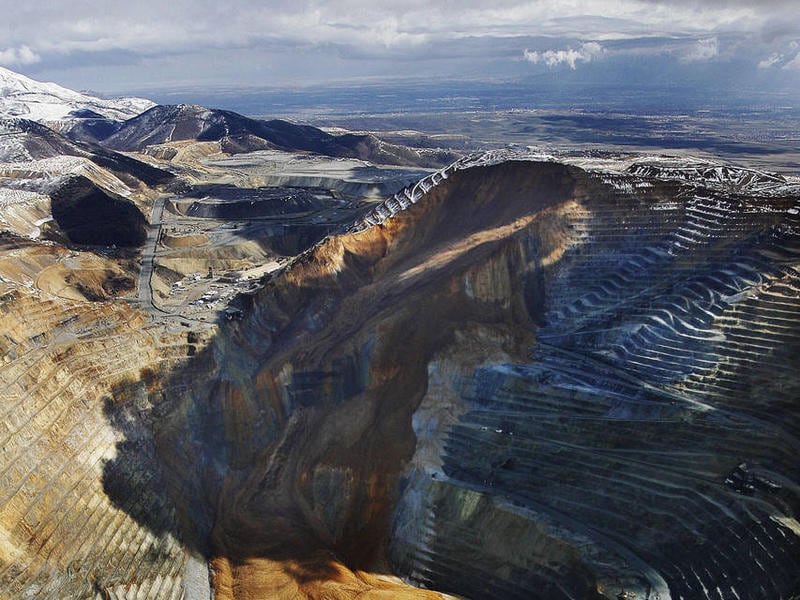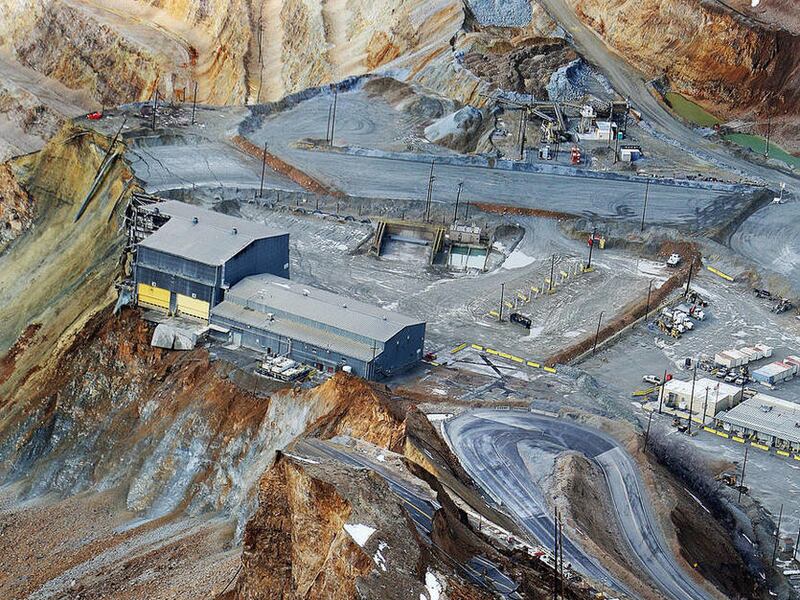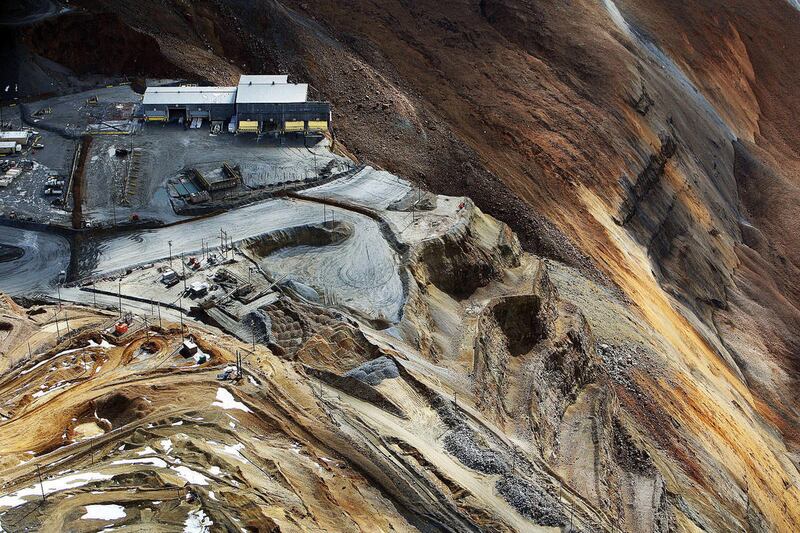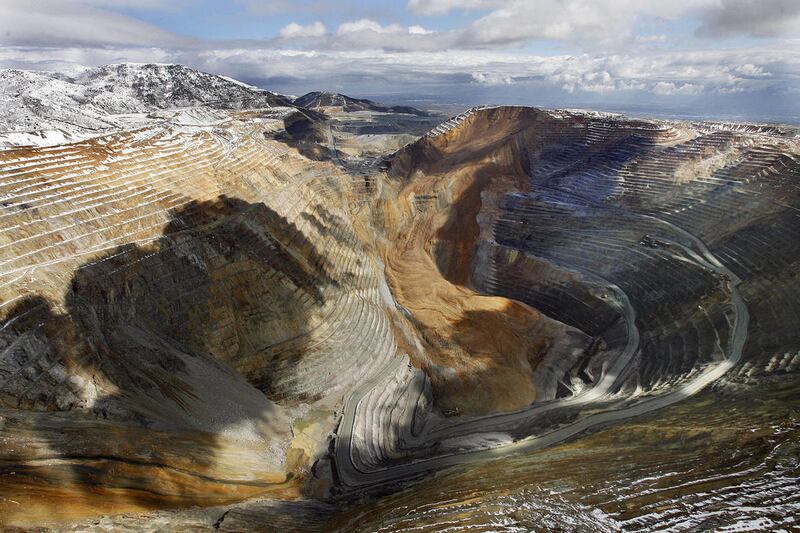This is something that we had anticipated. We knew the slide was imminent. We had relocated machinery, we had rerouted roads, we had rerouted utilities, we had rerouted buildings. – Kennecott spokesman Kyle Bennett
BINGHAM CANYON — What started as movement measuring only fractions of an inch at Kennecott Utah Copper's Bingham Canyon Mine became the biggest slide Ted Himebaugh has seen in his 36 years with the company.
Himebaugh, Kennecott's general manager of operation readiness, said the size and depth of the slide that occured Wednesday night is still unknown. After effectively preparing for the slide and preventing any injury, teams are beginning to assess its impact before they can determine when workers will return.
"Our primary goal now is to determine how we can safely resume operations and provide not only the jobs for the people but money to the state of Utah and economy," he said. "We've got to do that (safely), and that's probably the No. 1 thing that would slow anything down. … We will not take a risk."
While there is no word on when the mine will start producing again, it will be "days or weeks" before facilities that process the ore will run out of materials, Himebaugh said.
The slide occurred around 9:30 p.m. in the northeast section of the mine, Kennecott spokesman Kyle Bennett said. No employees were injured, but roads, buildings and vehicles inside the pit have been damaged.
Kennecott is the second largest copper producer in the United States, supplying about a quarter of the country's copper, according to the company's website. Bingham Canyon Mine is the largest man-made excavation on Earth.
The copper mining company was aware of the impending slide and had warned residents near the mine Wednesday that a slide was possible any day. Kennecott engineers had been detecting ground movement as far back as February.
At the time, the movement amounted to just fractions of an inch, but it was enough for the company to close and relocate the mine's visitors center. The visitors center will not open in 2013, the company announced Thursday.
"This is something that we had anticipated," Bennett said of the slide. "We knew the slide was imminent. We had relocated machinery, we had rerouted roads, we had rerouted utilities, we had rerouted buildings."
Over the past few days, engineers started seeing movement of up to 2 inches per day.
"We've seen acceleration rates increase until where we landed (Wednesday night)," Bennett said. "When it reaches 2 inches per day, that's certainly a time when we want to take steps that we have been planning for a number of weeks in order to make sure people are out of the way."
All employees were evacuated in pre-emptive measures and were safe and accounted for after the slide. Bennett said access to the mine continued to be restricted Thursday and that no employees were being allowed to enter. The miners stayed home with pay while managers determine the company's next move.
"Our job is to safely produce copper. That's our goal," Bennett said. "That's what we want to do. Our employees are critical to that."
Bennett said it does not appear that the nearby community was impacted by the slide.
Movement is constant in the mining business, Himebaugh said. Four redundant systems track that movement in real time, providing data that is evaluated by specialized teams. Additionally, "900 sets of eyes" working in the mine are constantly watching for activity, he said.
The newest system, which uses radar to take 385,000 pictures of the mine wall every four minutes, first detected the movement and is being used to determine when human crews can enter the mine and evaluate the damage in person, Himebaugh explained.
"We have some cardinal rules about how we take care of those slopes for our workers," he said. "We don't stand under them, and we don't turn our back on them. We respect them."
Mine managers anticipated what section of the mine wall was likely to move, a surface area "a couple thousand feet wide" and just as tall, but the slide traveled deeper into the mine pit than they expected, Himebaugh said.
Teams worked preemptively to clear out an old truck shop that was partially swept away, successfully limiting the damage. However, equipment left stationed at the bottom of the mine to help remove debris was caught and buried when the slide moved deeper than predicted.
About two-thirds of the bottom of the pit was buried, Himebaugh estimated.
Himebaugh said the vast cut made by the slide was quiet as of Thursday afternoon, though teams were monitoring areas high up on the wall that could possibly come down.
"They're nothing like what we have, but we'll watch them very closely," he said. "We're not without any concerns, but we certainly don't see any real movement in that area anymore. It's pretty much over."
Contributing: Shara Park
E-mail: mromero@deseretnews.com, aadams@ksl.com
Twitter: McKenzieRomero

